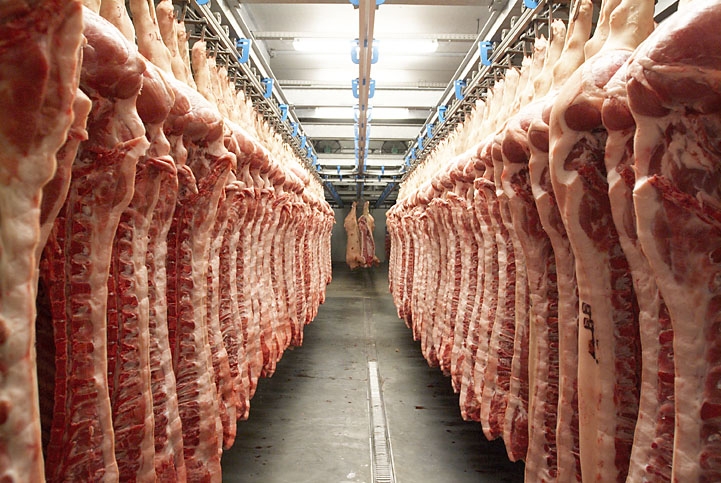Fewer pigs on the hook since 2017

The trend of declining pork production has continued since 2017. The amount of meat produced commercially in Germany fell in 2021 for the fifth year in a row. As the Federal Statistical Office (Destatis) reported today on the basis of provisional data, a total of almost 7,65 million tonnes of meat were produced last year; compared to 2020, this corresponded to a decrease of 191.000 t or 2,4 percent. At the same time, this was the lowest meat volume in more than ten years, which had peaked in 2016 at 8,28 million t but has since fallen by 634.000 t or 7,7 percent.
Fewer and fewer pig farmers
Appropriately, 1.600 pig farmers gave up within the last year. As of November 3, 2021, the Federal Statistical Office (Destatis) reported 23,6 million live pigs in Germany. It was also the lowest number of pigs since 1996. Compared to the livestock survey on May 3, 2021, the number of pigs fell by 4,4 percent or 1.081.000 animals. Compared to the previous year's value of November 3, 2020, the stock has decreased by 9,4 percent or 2.450.300 animals. Compared to May 2021, the number of piglets also fell by 5,7 percent or 418.300 to 6,9 million animals. In the case of breeding sows, Destatis reports a year-on-year decline of 7,3 percent to 1,57 million animals.
Unfortunately, 2011 percent of pig farmers have given up since 39,1.
Fewer pigs imported
With the exception of sheep, production of all types of meat fell last year; According to the Wiesbaden statisticians, this was particularly evident in pigs. The number of commercially butchered animals fell by around 1,54 million or 2,9 percent to 51,78 million pieces compared to the previous year; this was the lowest level since 2006. The number of slaughter pigs from domestic stables fell by 0,8 percent to 50,61 million; The generation of Pork overall it fell by 2,9 percent to 4,97 million t, the lowest level since 2007.
The commercial slaughterhouses and cutting plants also got 2021 less cattle delivered. According to Destatis, the slaughter volume in question fell by 32.100 animals or one percent to 3,23 million head compared to the previous year. This was primarily due to the 4,1 percent drop in supply of slaughter bulls to 1,19 million. In addition, at 306.000 calves, 1,9 percent fewer calves were slaughtered. On the other hand, slightly more female animals were processed than in 2020. The number of cows for slaughter increased by one percent to 1,12 million; an increase of 1,7 percent to 569.800 animals was recorded for heifers. With overall lower slaughter weights, German beef production fell by 2020 percent to 1,8 million t compared to 1,07, and it has fallen by 7,1 percent within five years.
The long-term growth trend in the German industry did not continue last year poultry meat production. According to Destatis, commercial production fell by 2020 t or 26.000 percent to 1,6 million t compared to 1,59. In addition to losses due to avian influenza, this was mainly due to the 7,4 percent drop in turkey meat production to 441.400 tons. In the case of ducks, a drop of 17,5 percent to 21.900 t was recorded. In contrast, the production of young broiler meat increased moderately by 1,4 percent to 1,08 million tons. This means that the commercial production of chicken meat has overtaken that of beef for the first time. The only increase was sheepmeat, with production at commercial farms up 2020 percent to 1,6 tonnes compared to 24.500.
From the author's point of view, the declines have different causes.
On the one hand, there is a critical attitude towards meat consumption in general, caused by climate change.
Furthermore, the general poor business situation of many farmers, which has been exacerbated by the corona crisis in the last 2 years.
And finally the tense personnel situation in the meat industry, which was also triggered by the corona pandemic, but also - to a not inconsiderable extent - by the elimination of work contracts and the associated more difficult personnel recruitment and personnel scheduling.
Source: afz - general fleischer newspaper 6/2022; agricultural newspaper
